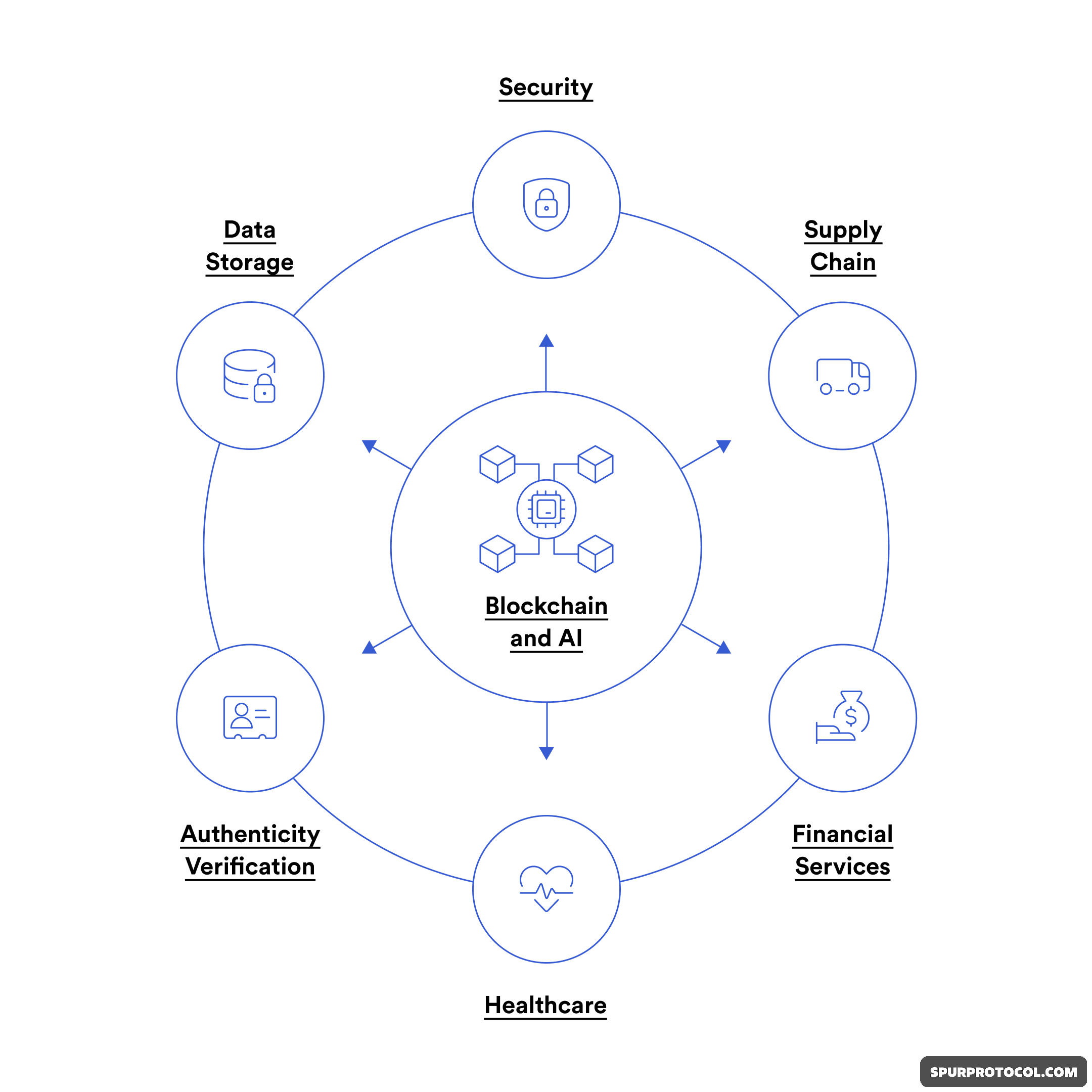How AI benefits blockchain.
AI improves the efficiency, scalability, and security of blockchain networks.
Optimized transaction processing: Many blockchain networks, especially older ones, can be slow. AI algorithms can optimize consensus mechanisms and predict network traffic to speed up transaction validation and improve overall network efficiency.
Enhanced security and fraud detection:
While blockchain is secure, AI adds an extra layer of protection. AI can analyze blockchain data in real-time to identify anomalies and suspicious transaction patterns that may indicate fraudulent activity.
Smarter smart contracts:
Smart contracts are automated agreements that execute when predefined conditions are met. AI can make these contracts more intelligent and dynamic by allowing them to adapt to real-time data and changing circumstances, reducing the need for manual intervention.
Improved energy efficiency:
Certain blockchain protocols, like Proof of Work, are very energy-intensive. AI can be used to optimize resource allocation during mining and other processes, reducing the overall energy consumption of the network
.
How blockchain benefits AI
Blockchain provides AI with features like data integrity, transparency, and decentralization that are often lacking in traditional systems.
Trusted, transparent data:
AI models are only as good as the data they are trained on. Blockchain's immutable, tamper-proof ledger creates a verifiable record of data provenance, ensuring the integrity and quality of the training data. This makes AI decisions more trustworthy and explainable.
Decentralized AI:
Traditional AI is often controlled by a few large tech companies. By using a blockchain, AI models can be decentralized, distributing control across a network. This promotes a more open, transparent, and collaborative ecosystem for AI development.
Data privacy:
Blockchain's encryption and decentralized nature can be used to securely share datasets for training AI models without compromising user privacy. This can be combined with techniques like federated learning to allow multiple parties to train a model collaboratively without sharing sensitive raw data.
Auditable decision-making:
The decisions made by an AI model can be recorded on a blockchain. This provides an immutable audit trail that can be used to track and verify how the AI arrived at a specific conclusion, which is critical for accountability and regulatory compliance.
Real-world use cases:
The combination of AI and blockchain is driving innovation across many industries:
Supply chain management:
A blockchain can provide a transparent, end-to-end record of a product's journey. AI can then analyze this data to predict demand, optimize logistics, and detect fraudulent or counterfeit goods.
Healthcare:
Blockchain can secure patient health records, while AI analyzes the data for diagnostics, treatment recommendations, and drug discovery. This approach ensures data privacy and integrity while improving medical outcomes.
Finance:
AI is used for enhanced fraud detection, risk assessment, and algorithmic trading. Blockchain provides a secure ledger for transactions, creating a more transparent and efficient financial system.
Intellectual property (IP) protection:
A blockchain can create an immutable, time-stamped record of IP ownership. AI can then help detect infringement by scanning for unauthorized use of tagged IP.
Decentralized AI marketplaces:
Platforms like SingularityNET use a blockchain to create a decentralized marketplace where developers can buy and sell AI services.
